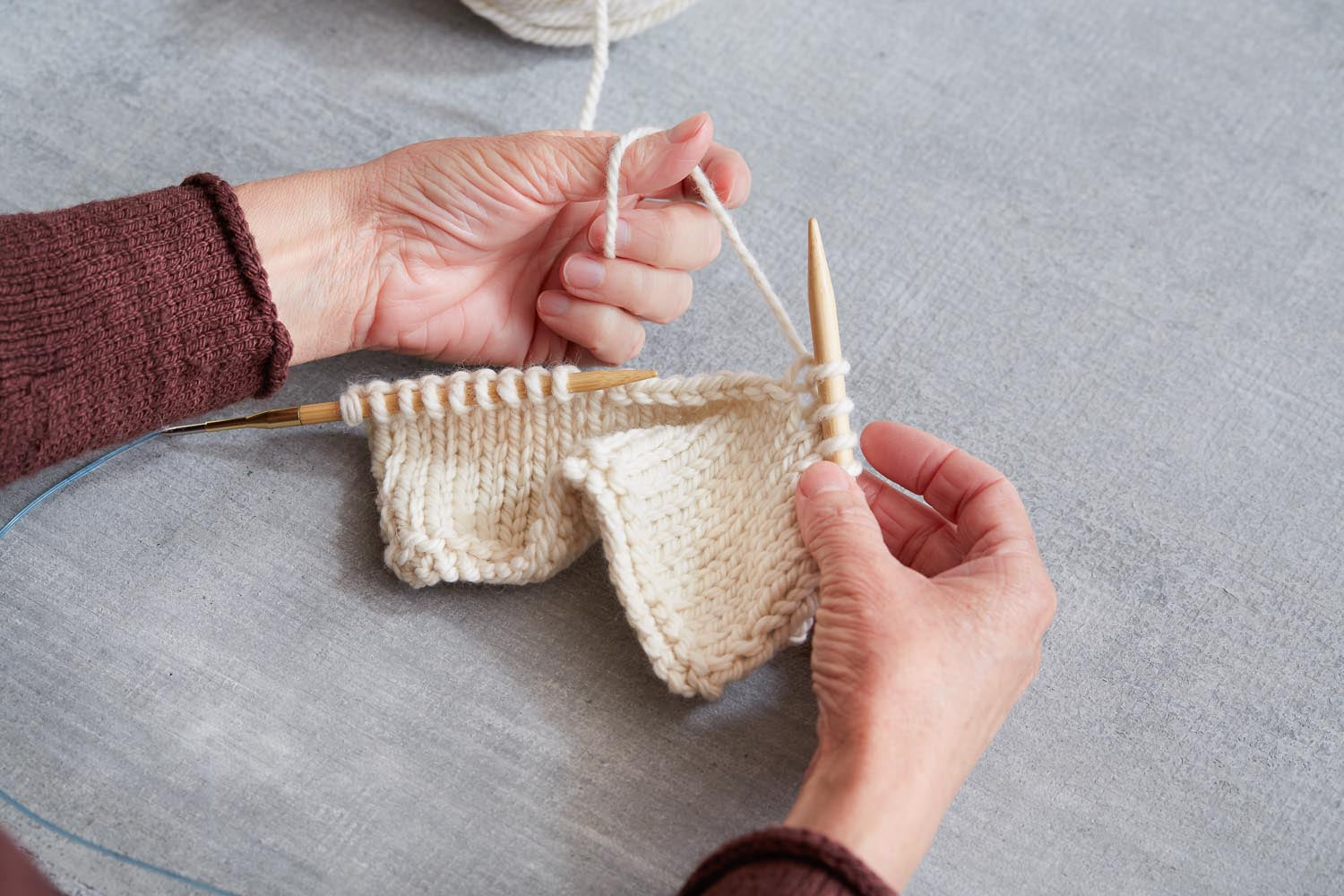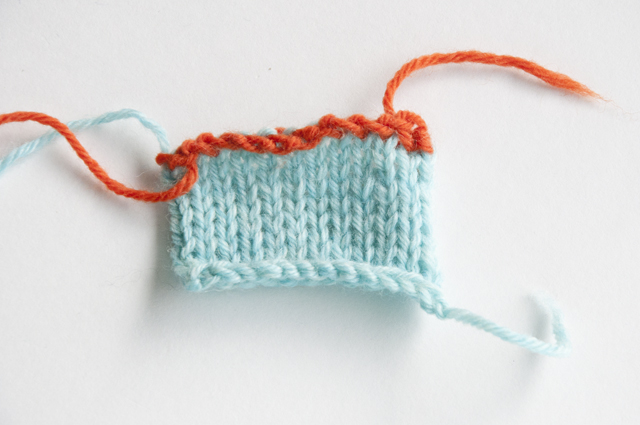
With every new stitch the running thread connecting the needles will grow longer. If you use the backward loop cast on without paying attention to keeping the needle tips close together when knitting the first row, then you will soon realize something is wrong. Getting it wrong – excess yarn between the needles If you experience a lot of slack, then you can replace more of the cast-on stitches with M1 increases. The join between the cast-on and the existing stitches will tend to be loose, but you remedy this with the trick above: Cast on two less stitches than required, then on the following row/round work a Make 1 at each end to take up the slack. This is an example of casting on stitches in the middle of a row, and more than just a few stitches. If you are making a top-down sweater, then the backward loop cast-on is an excellent choice for the underarm cast-on. Backward Loop Cast-On for top-down sweater underarm cast-on If you are on a purl row, then you make one with a purl stitch. To Make 1 Left, pick up the running thread between the needles with the left needle tip, from front to back, and then knit into the back of the loop, creating a new stitch. Then you knit five more stitches, and between the new stitches and those that were already on the needle before you began casting on with backward loops, you again Make 1 Left. I would choose to Make 1 Left, but you can Make 1 Right if you prefer. So, in the example, you turn the work, knit five stitches, and from the excess yarn that has built up between the needles you Make 1.

Keep in mind that Make Ones are always done between two stitches. Then on the first row knitting those new stitches, you increase with two stitches, using the increase method Make 1. Say you need 12 new stitches at the end of a row, then you cast on 10 stitches with backward loops, and turn the work. If you need to cast on more than a few stitches with the backward loop method, then cast on one stitch less for every five or six stitches you need. However, there’s a neat little trick that will allow you to cast on more stitches with the backward loop method without worrying about that excess yarn. That’s why this cast-on technique is best suited for a small amount of stitches. No matter how careful you are, an excess of yarn will build up between the needles. When tightening a newly formed stitch, be sure to only tighten it with the working yarn and never with the yarn between the two needles. You will want to work close to the tips, without pulling the needles apart, to prevent excess slack. Therefore you need to be very careful when you knit the first row. The loops are not really stitches yet, and it’s not surprising that the cast-on can come apart when you start knitting from it.

The backward loop cast-on amounts to simply wrapping loops loosely on the needle. Search for: Follow On the Needles on WordPress.Getting it right – Be careful knitting the first row So file it away in the back of your brain and pull it out when you find a project that calls for the backwards loop cast on. But it’s very useful in small doses, especially when you need to cast on extra stitches mid-project. This isn’t a cast on that I would use for an entire sweater or blanket, it’s a little delicate, and doesn’t look great. But, if you go slow and knit carefully, you won’t have a problem. The very first row after the cast on might be a bit tricky sometimes the backwards tail cast-on stitches try to fall apart. Keep making backwards loops and adding them to the needle until you’ve got as many cast-on stitches as you need. Knit along, until you’re ready to start your increase.įorm a backwards loop with your yarn, and slide the loop onto the needle. Need to cast on extra stitches for an underarm? Making a baby sweater, and need to start knitting sleeves? The backwards loop cast on is for you.

My favorite part of the backwards loop cast on is that you can use it in the middle of a project. If you can do a loop increase (sometimes called a make-1), you can totally do the backwards loop cast on! The backwards loop cast on only uses one strand of yarn (no fussing with tails or scrap yarn).

Today’s cast on is the easiest cast on of all time.


 0 kommentar(er)
0 kommentar(er)
